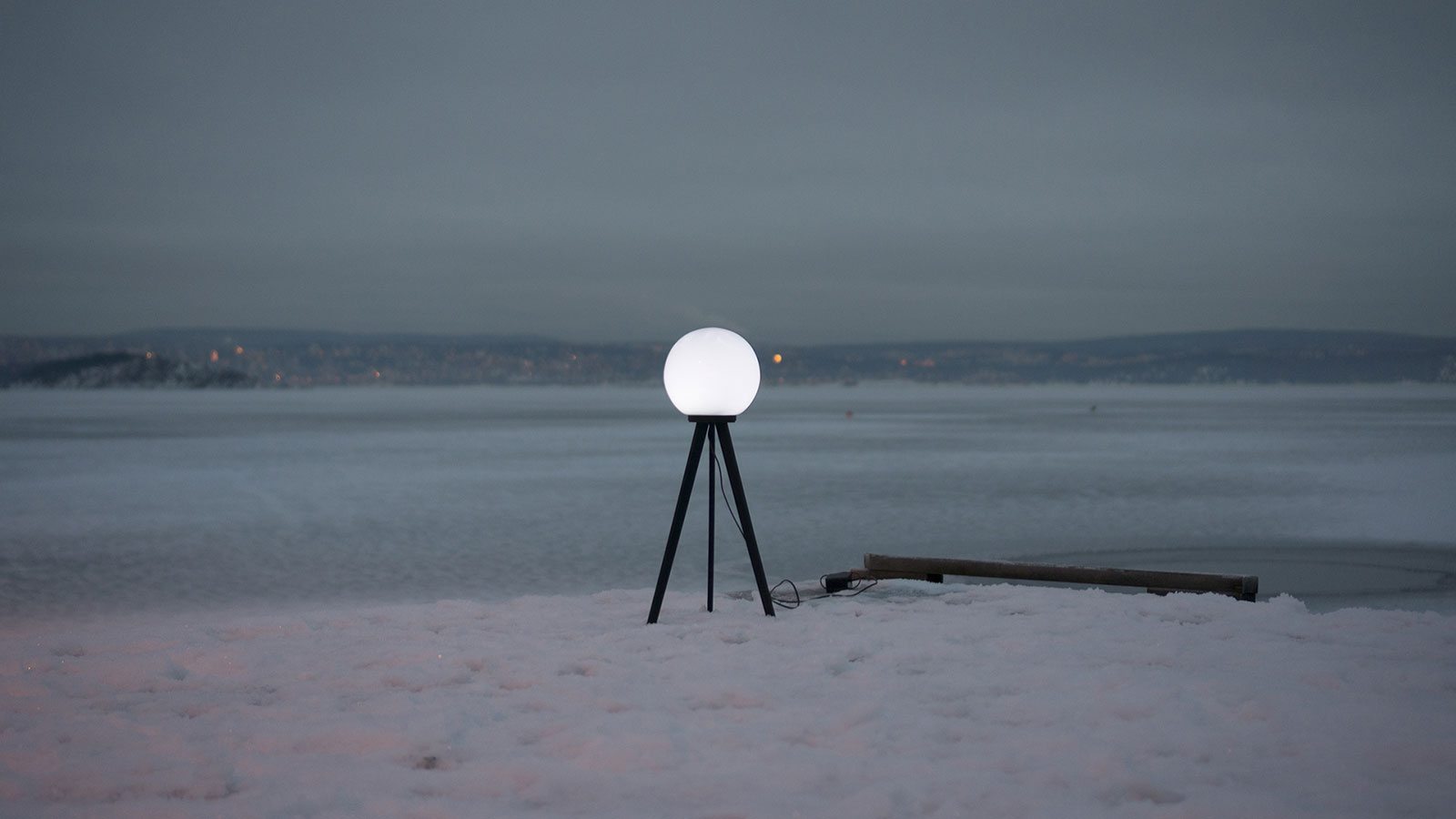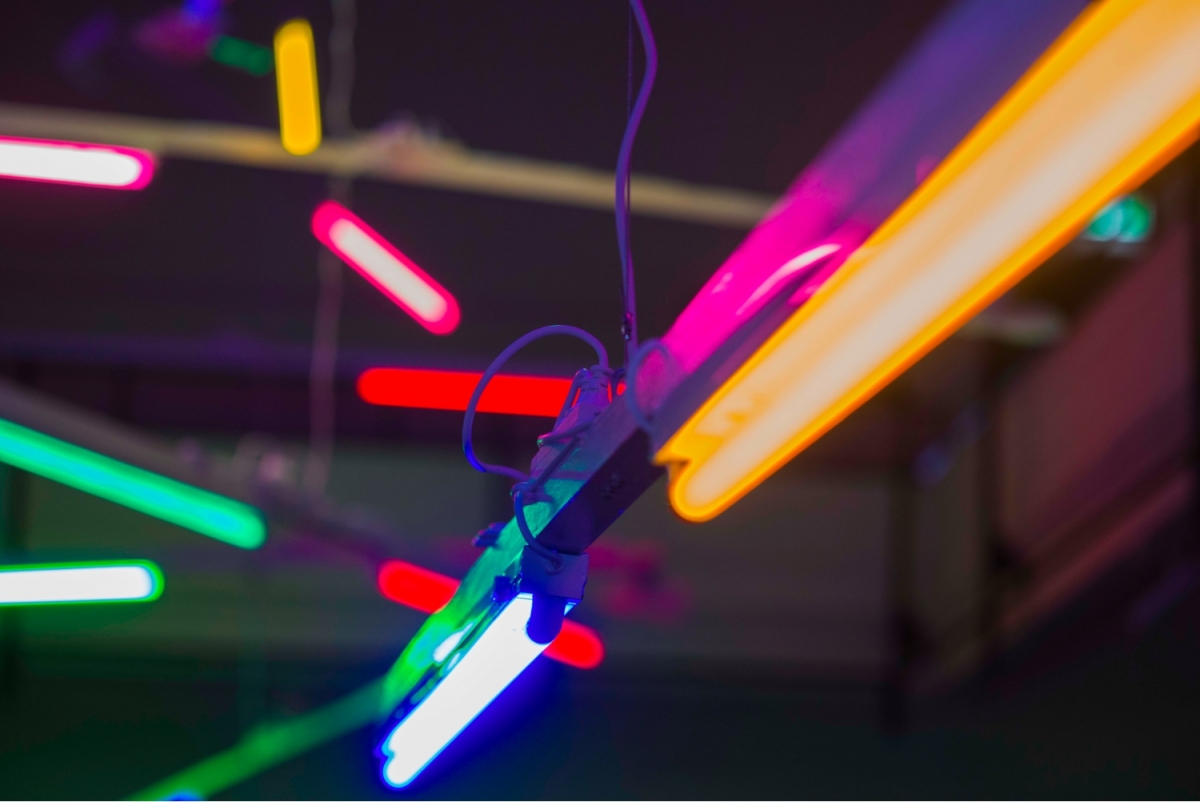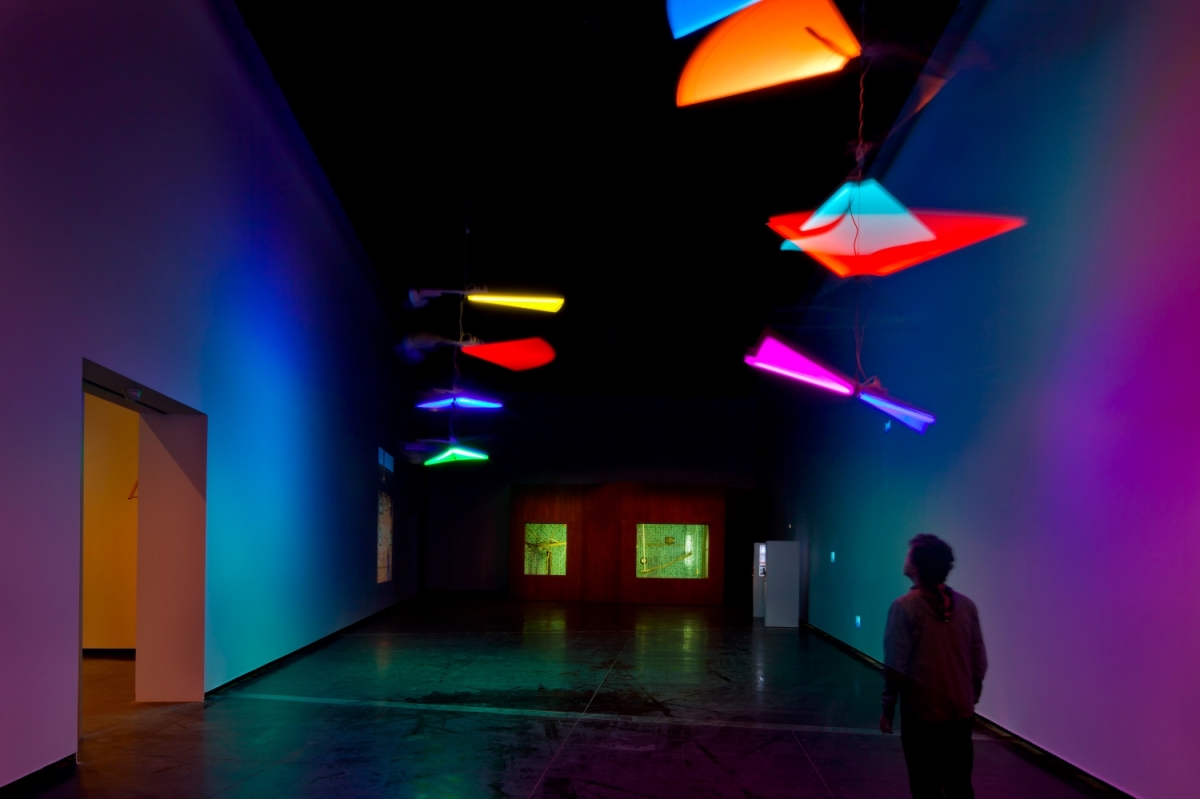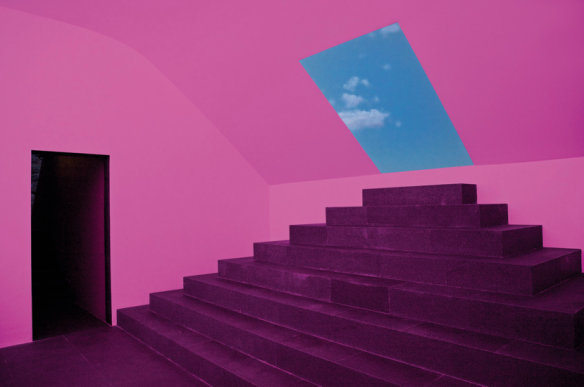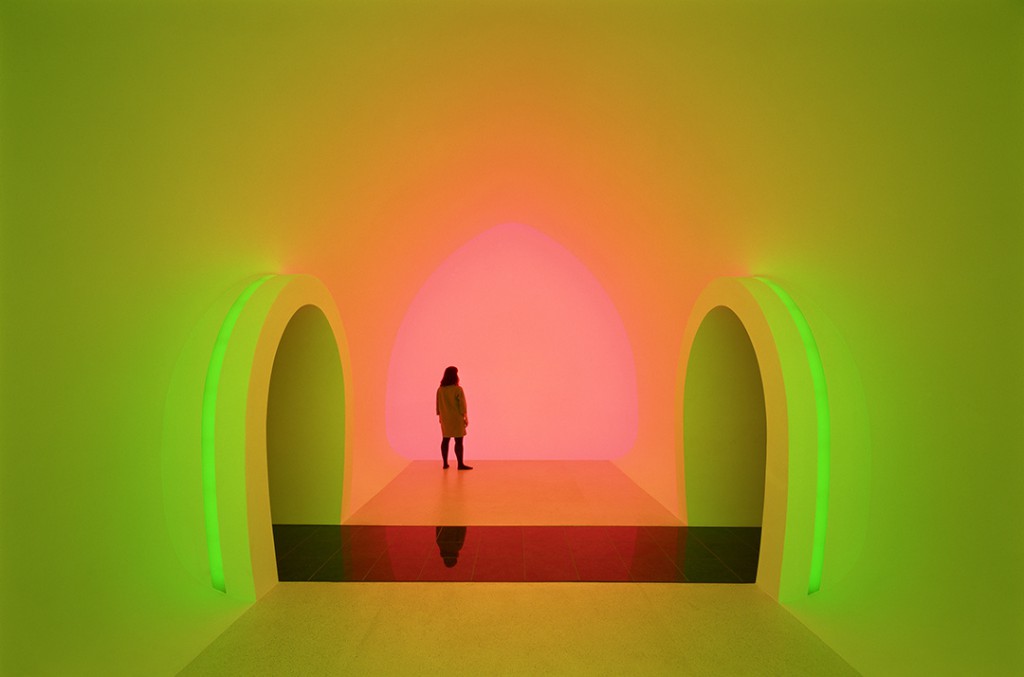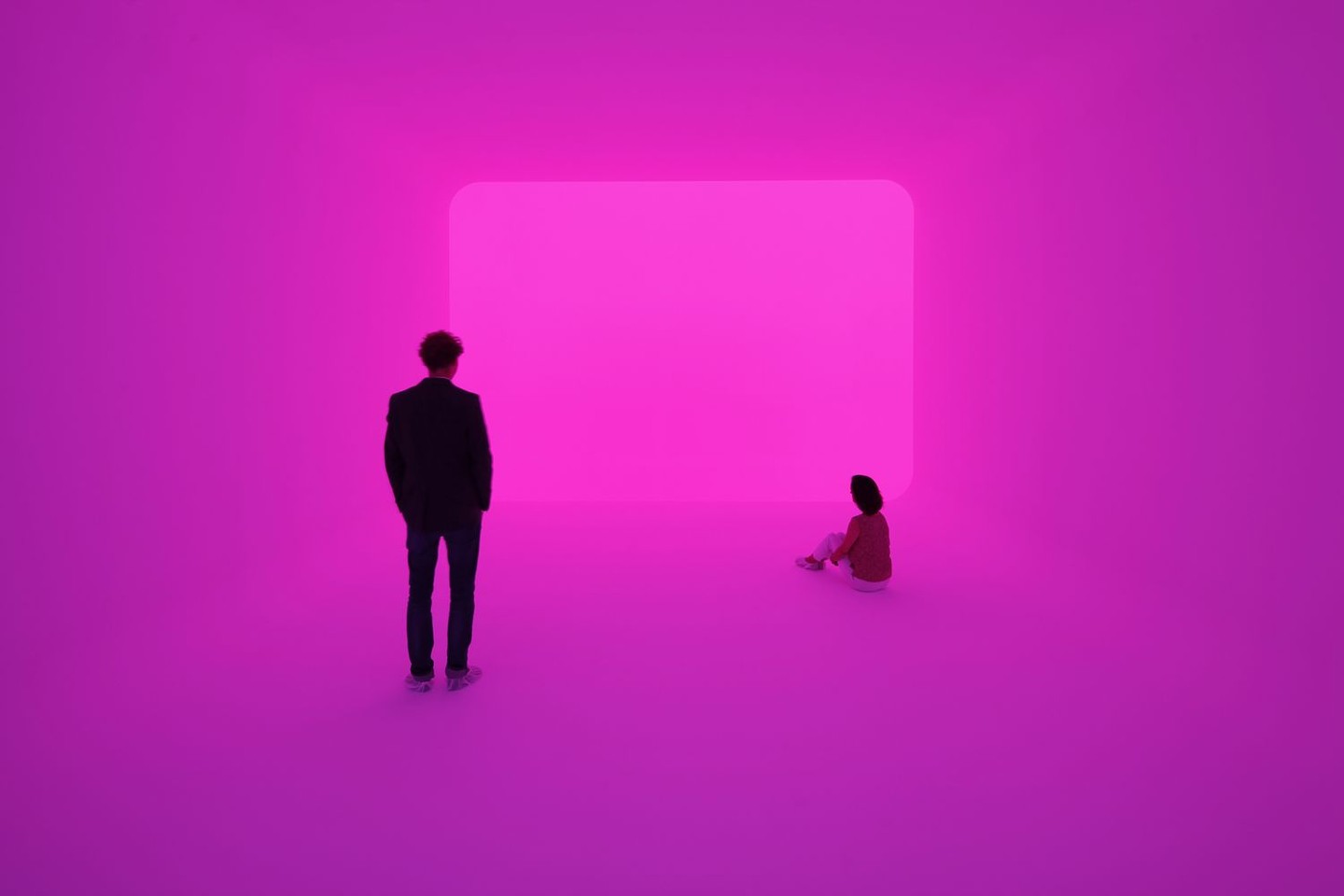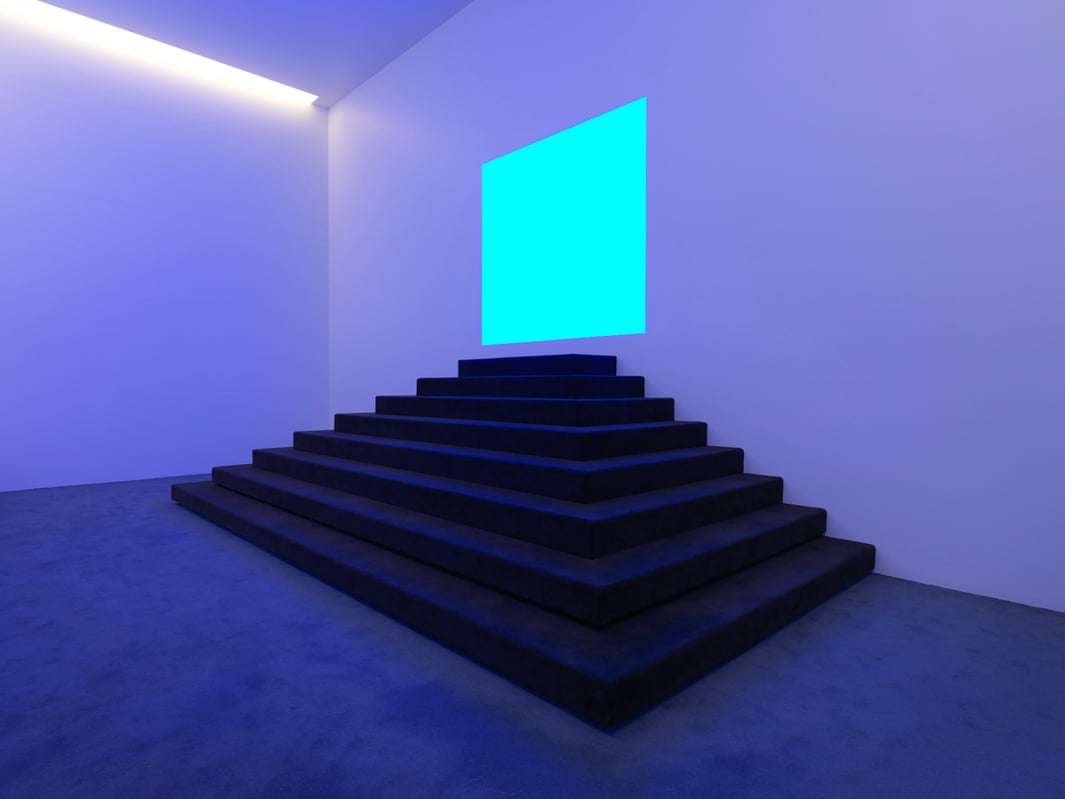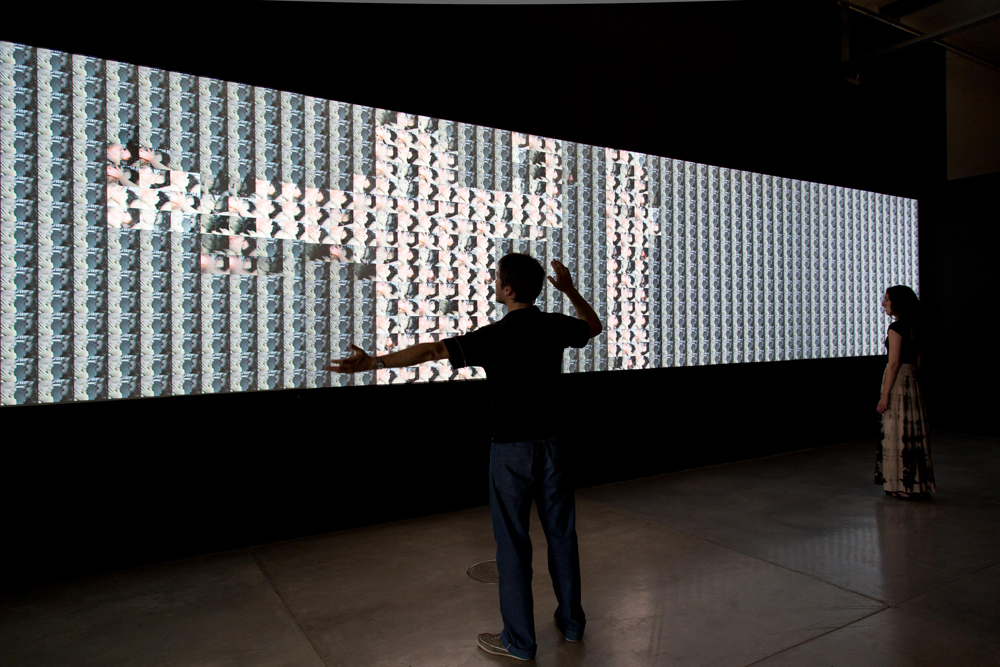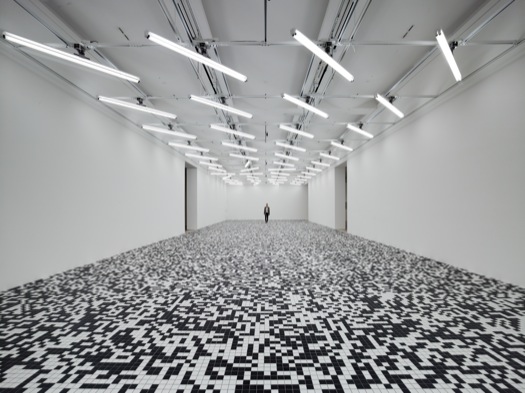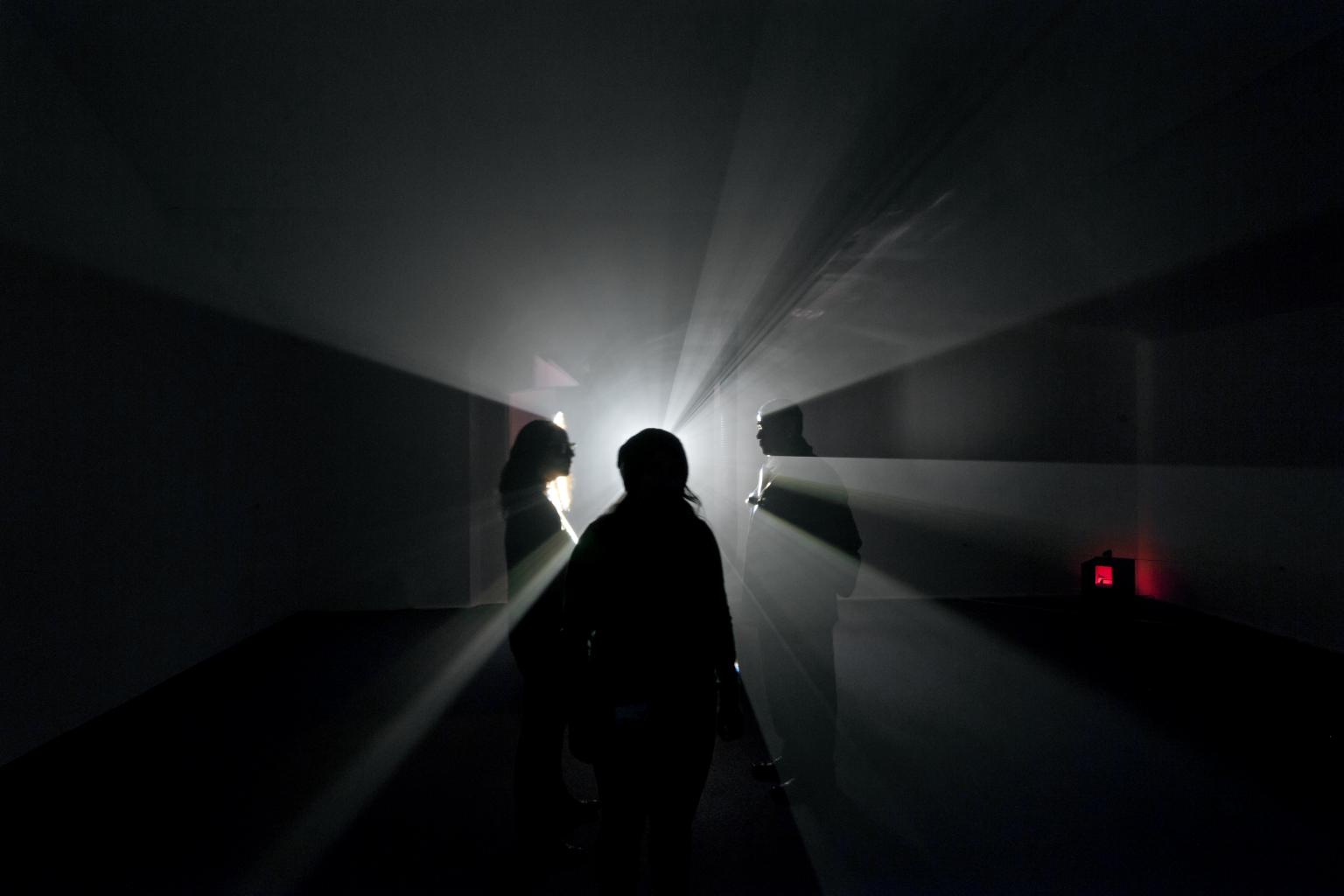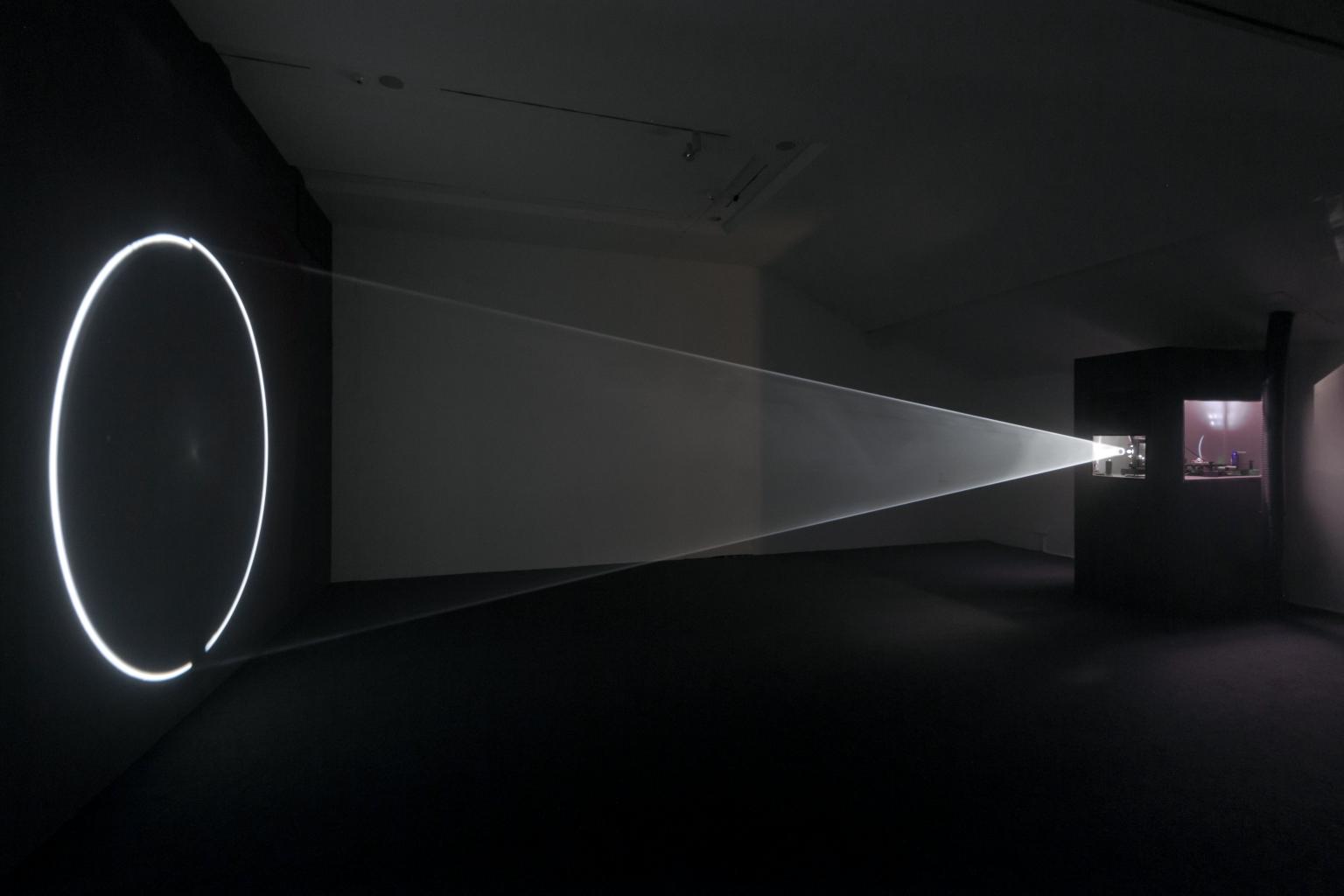From Wikipedia:
The idea for Line Describing a Cone came to McCall on his voyage from London to New York, where he produced the film in 1973. Though he had already created a number of other 16mm films, Line allowed him to actualize his ideas on the relationship between viewer and film and the medium of film itself. The thirty-minute film begins with a single white dot projected onto a black surface. As time progresses, the dot begins to form a curved line, tracing the circumference of a circle until the end of the line reaches its starting point. Meanwhile, particles in the air reveal the path of light in the space between the projector and the wall, making visible a cone of light. If the artist's display specifications are met, this beam of light projects between thirty and fifty feet. The circle that is projected onto the surface sits approximately twelve inches above the ground, and its diameter spans seven to nine feet. The exhibition space lacks seating, inviting the viewer to interact with the ray of light beaming from the projector to the screen. When multiple spectators view the piece together, these encounters with the light, at once an interruption and component of the piece, become an interaction with other audience members.
Line Describing a Cone reflects McCall's interests in film and sculpture. Line addresses the medium of film by removing the narrative demands and addressing the specific properties of the medium itself such as projection, frames, and light. Moreover, by emphasizing the physical space between the projector and screen McCall calls attention to the sculptural dimensions of projection. In his artists's statement written to judges of the Fifth International Experimental Film Competition, McCall writes:
"It deals with the projected light beam itself, rather than treating the light beam as a mere carrier of coded information, which is decoded when it strikes a flat surface… Line Describing a Cone deals with one of the irreducible, necessary conditions of film: projected light. It deals with this phenomenon directly, independently of any other consideration. It is the first film to exist in real, three-dimensional space."
